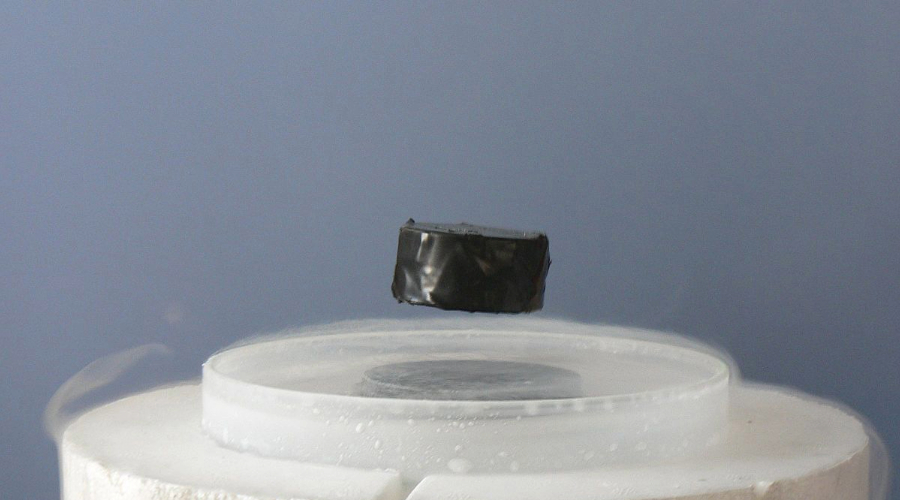Green Superconductors
In a world increasingly focused on sustainability and reducing our carbon footprint, innovations in the field of superconductors have taken on a new level of importance. Superconductors, with their ability to conduct electricity with zero resistance and high efficiency, offer a promising avenue for creating greener and more energy-efficient technologies. Among these innovations, “green superconductors” are emerging as a critical component of our sustainable energy future.
Superconductors, in general, are materials that can conduct electricity without any loss of energy. They have the potential to revolutionize various sectors, including energy transmission, medical devices, transportation, and more. However, many traditional superconductors rely on elements that are scarce, expensive, or environmentally damaging, such as rare earth metals.
Green superconductors, on the other hand, are a new breed of materials designed to be more environmentally friendly. These materials aim to replace or reduce the use of harmful or scarce elements, making them more sustainable and compatible with our efforts to protect the environment.
The Promise of Sustainability
Green superconductors offer several promising aspects for a more sustainable future:
Reduced Reliance on Critical Elements:
Traditional superconductors often depend on rare and critical elements, making large-scale adoption challenging. Green superconductors are designed with the intent of reducing this dependence, making them more widely accessible.
Lower Environmental Impact:
Many traditional superconducting materials come with a hefty environmental cost, from mining and refining to disposal. Green superconductors aim to reduce this impact by using less harmful elements or materials that are easier to source and recycle.
Enhanced Energy Efficiency:
By improving energy efficiency and reducing losses in power transmission and distribution, green superconductors can play a significant role in lowering overall energy consumption and greenhouse gas emissions.
Cutting-Edge Research and Applications
Researchers worldwide are actively exploring and developing green superconductors. Here are some exciting areas of research and applications
High-Temperature Superconductors (HTS):
Green superconductors, including HTS materials, operate at higher temperatures, reducing the need for energy-intensive cooling. This innovation is particularly important for power transmission and large-scale energy storage.
Topological Superconductors:
These materials exhibit unique properties, including robustness against external perturbations, making them attractive for quantum computing and fault-tolerant quantum systems.
Superconducting Energy Storage:
Green superconductors are being integrated into energy storage systems, such as Superconducting Magnetic Energy Storage (SMES), offering a highly efficient and eco-friendly solution for storing renewable energy.
Materials Selection:
Choose Environmentally Friendly Elements: Select elements and compounds that are more abundant, sustainable, and less environmentally damaging. For example, some green superconductors replace rare earth elements with more common materials.
Applications:
Integration into Devices: Once the green superconductor is fabricated and characterized, it can be integrated into various applications such as power transmission cables, energy storage systems, medical devices, or quantum computing hardware. Additionally, ongoing research and development in the field of green superconductors may lead to new and improved fabrication methods in the future.
Iron-Based Superconductors (Iron Pnictides):
- Example Material: LaFeAsO (Lanthanum Iron Arsenide Oxide)
- Application: Iron-based superconductors have been explored for applications in energy transmission and storage, as well as in superconducting magnets for medical devices.
- Cuprate Superconductors (Copper Oxides):
- Example Material: YBCO (Yttrium Barium Copper Oxide)
- Application: Cuprate superconductors are known for their high-temperature superconductivity. While they contain some rare elements like yttrium and barium, they offer significantly higher critical temperatures and are used in various applications, including fault current limiters for grid systems.
- Bismuth-Based Superconductors:
- Example Material: Bi2Sr2CaCu2O8 (Bismuth Strontium Calcium Copper Oxide)
- Application: Bismuth-based superconductors are used in various applications, including superconducting wires and magnets for medical devices like MRI machines.
- Magnesium Diboride (MgB2):
- Application: Magnesium Diboride is composed of magnesium and boron, it has applications in power transmission cables, fault current limiters, and energy storage devices.
- Topological Superconductors:
- Example Material: HgTe (Mercury Telluride) – a topological insulator with superconducting properties
- Application: Topological superconductors are known for their unique properties, making them attractive for quantum computing and topological qubits.
- Two-Dimensional (2D) Superconductors:
- Example Material: Graphene or 2D materials with superconducting properties
- Application: Research into 2D superconductors is ongoing. They have the potential to be more environmentally friendly due to their atom-thin nature and could find applications in nanoelectronics and low-power devices.
- Green Synthesis Techniques:
- These techniques focus on energy-efficient methods, fewer hazardous chemicals, and reduced waste.
- The term “green superconductors” can refer to both the materials themselves, which are made using more sustainable elements, and the development of more environmentally friendly fabrication methods.
Future Outlook
Green superconductors hold the promise of making superconducting technology more sustainable and accessible. As research progresses and technology develops, these materials may become pivotal in addressing the world’s energy and environmental challenges.
Conclusion
Green superconductors represent a significant step towards achieving a more sustainable energy future. With their reduced reliance on critical elements, lower environmental impact, and enhanced energy efficiency, they offer a path to greener technologies and a reduced carbon footprint. As research and development in this field continue to advance, green superconductors are poised to play a critical role in our journey toward a more sustainable world.
Source:

